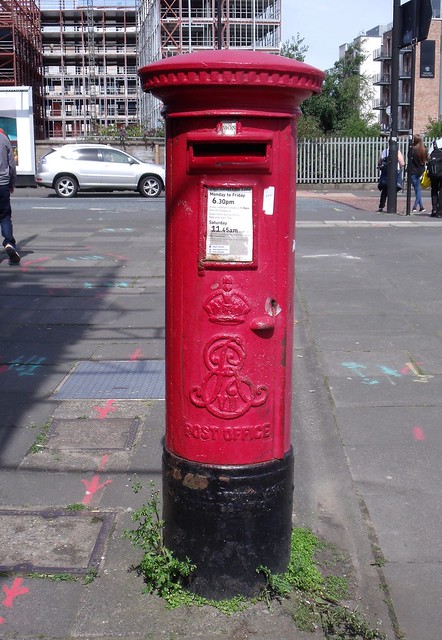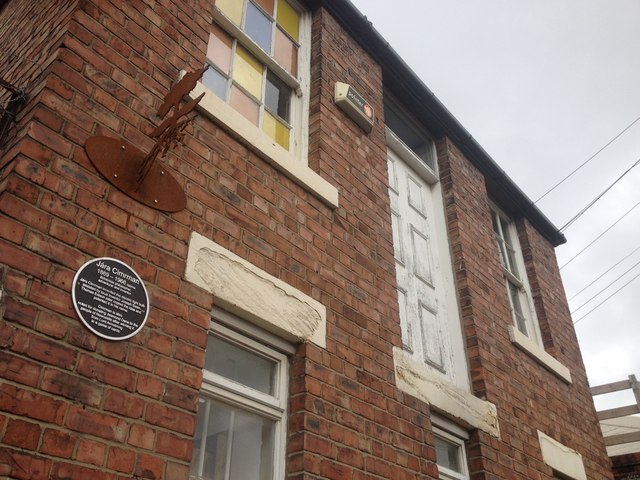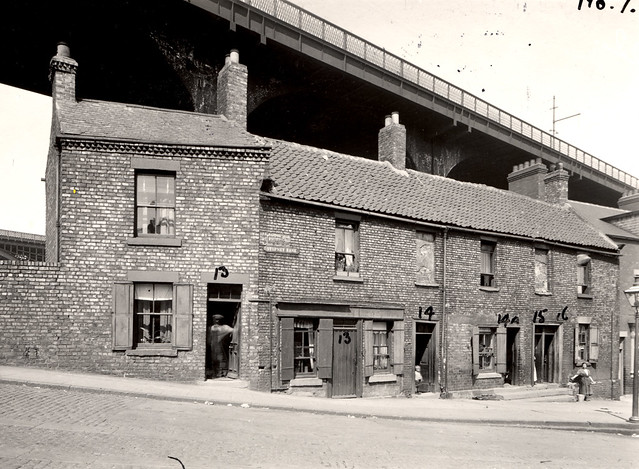Topics > Northumberland > Civil Parishes in Northumberland > Simonburn Civil Parish > Simonburn Parish, 1855
Simonburn Parish, 1855
Extract from: History, Topography, and Directory of Northumberland...Whellan, William, & Co, 1855.
SIMONBURN PARISH comprises a chapelry of Humshaugh, and the townships of Haughton and Simonburn. It was formally remarkable as being the largest parish in the Diocese of Durham, extending from the Roman wall to Liddesdale, in Scotland, the distance of 33 miles, and embracing the present parishes of Simonburn, Bellingham, Falstone, Greystead, Thorneyburn, and Wark, which, in conformity with an act of parliament passed in 1811, were erected in two distinct rectories, in 1814, upon the death Dr. Scott, the last incumbent of the ancient parish. Several parts of this extensive district had been drained, enclosed, and brought into cultivation, yet, the greater portion is still used as sheepwalks, etc. The country here presents a very varied aspect, and some parts are highly beautiful and romantic. It abounds in coal and ironstone, and iron appears to have been extensively wraught here in ancient times. The present parish contains 13,372 acres; the number of its inhabitants in 1801, was 900; in 1811, 956; in 1821, 1,030; in 1830, 1,135; in 1841, 1,029; and in 1851, 1,080 souls. The manorial rights are vested in the Commissioners of Greenwich Hospital, who are also the patrons of the different livings which have been formed out of the old parish. None but Navy chaplains of 10 years service are eligible as rectors of the new parishes, and they are not allowed to hold any other preferment, though they are authorised to receive half pay, and the Commissioners of Greenwich Hospital are empowered to redeem the land-tax chargeable on the rectories.
HAUGHTON is a township and village, the property of William Smith, Esq. and George Smith, Esq.. The area of the township is 1,128 acres, and its rateable value £2,007 5s. The population in 1801, was 78; in 1811, 152; in 1821, 127; in 1831, 154; in 1841, 118; and in 1851, 139 souls. THE VILLAGE of Haughton is situated 3 miles east by south of Simonburn. HAUGHTON CASTLE, the seat and property of William Smith, Esq. is an ancient and massive structure, surrounded by square turrets, and appears to have been, at one time, a very extensive edifice. At a short distance from the castle are the ruins of a chapel, and there appears to have been several other buildings in this neighbourhood. Haughton castle was formerly possessed by the ancient family of Swinburne, then afterwards by the Widdrington’s, from whom it was purchased by an ancestor of the present proprietor.
WESTOR HALL, the property and residence of George Smith, Esq., is a handsome stone edifice, erected in 1732. Here are paper mills, which are worked by Messrs. G. Craig & Co.
DIRECTORY
|
Craig Graham & Co, paper manufacturers, Haughton paper mills Smith George, Esq., Westor Hall Smith William Esq., Haughton castle Farmers Chatto John, Coldwell |
Kirksopp Thomas, Keeper Shield Robson Edward, West Stomfold Younger William, Haughton Mains Wilkinson Henry, Haughton Pastures
|
HUMSHAUGH is a chapelry, township, and village in the above parish, containing 1,778 acres, the property of Nathaniel Clayton Esq., William Smith Esq., George Smith, Esq., Christopher Colbeck, Esq., and others. The rateable value of the township is £275; It contained in 1801, 267; in 1811, 306; in 1821, 334; in 1831, 381; in 1841, 411; and in 1851, 446 souls. The land here is principally freehold, and each proprietor claims the manorial rights of his own property. The village of HUMSHAUGH is pleasantly situated on a rising ground near Chollerford Bridge, 5¼ miles North by West of Hexham. THE CHAPEL is a neat gothic structure, erected in 1818, at a cost of £4,000. The living is a perpetual curacy, in the patronage of the Commissioners of Greenwich Hospital; gross income £127. The register of the chapelry commences in 1819. HUMSHAUGH SCHOOL was established by Miss Clayton, in 1833, and a library was formed by subscription in 1849.
CHOLLERFORD is a hamlet in this township, situated on the west side of the north Tyne, five miles west by north of Hexham. The river is here crossed by a handsome stone bridge of five arches, which was erected in 1775.
POST OFFICE, HUMSHAUGH, Mary Harrison, post mistress. Letters arrive, from Hexham, at 4:00 PM, and are dispatched thereto at 9:00 AM.
DIRECTORY
|
Allgood Misses Sarah and Margaret Hannah, Lincoln Hill Baggs miss Frances Callender S.M., surgeon Carr George, Esq. hums Humshaugh House Clayton Nathaniel Esq., Chesters Coulson John and Thomas, land surveyors, Humshaugh Fell Craig Graham, paper manufacturer (Graham & Co), Hatheridge House Craig Mr. John, Hatheridge House Douglas H. butcher Elliot Thomas, shopkeeper Evans Mrs. Marian, Simonburn Cottage Fairless Robert, shopkeeper Golightly Jane, shopkeeper Herdman J, joiner Moore John, shopkeeper |
Nevin Hannah, vict. Crown Inn Potts William, innkeeper and posting-house, Chollerford Saint William, parish clerk Shield William Robson, surgeon Thompson H., blacksmith Varley Thomas, schoolmaster Young Rev. W.B.. curate Farmers Charlton William, and miller Douglas and Richley Reed Edward Reed Christopher Robson John, Waterside Tweddle Isaac
|
SIMONBURN is a township and village, in the parish of the same name, the property of H. Allgood Esq., John Ridley, Esq., Thomas Ridley, Esq., Henry Thompson, Esq., Michael Thompson, Esq., George Ridley, Esq., and others. The township contains 9,410 acres, and its rateable value is £3,646. Population in 1801, 555; in 1811, 498; in 1821, 569; in 1831, 600; in 1841, 500; and in 1851, 495 souls.
THE VILLAGE of Simonburn is pleasantly situated 9 miles N.N.W. of Hexham. The parish church, dedicated to Saint Simon, is an ancient structure, and having undergone a thorough renovation, in 1821, is now in a total tolerably perfect condition. It contains several beautiful monuments, and the parish register commences in 1681. The living, a rectory in the archdeaconry of Northumberland and Deanery of Bellingham, is rated at £34 6s. 6d.; gross income £596; net income £426. The great tithes were commuted in 1804. Patrons, the Commissioners of Greenwich Hospital. Rector, the Rev. Meyrick BeeBee, M. A. Wallace tells us that in digging a grave near one of the windows in this church in 1762, a very remarkable skull was found. On the back of it, there was the figure of a large scallop shell and at one of the auditories, the figure of a torcular shell, like a screw. It is much to be regretted that Wallis should have treated this curiosity so slightly. “He does not even say”, observes Hutchinson, “whether these impressions were sculptured or adhesions of petrified matter. In either case it would have gratified the virtuoso to have had a perfect description. We read of that degree of wantoness and inhumanity, that the skulls of enemies at public festivals, were used to drinking cups. Was this ornamented with sculpture, it would lead to an apprehension that it was once employed in such unhallowed rites. If these were petrifactions, it would be still more wonderful”.
SIMONBURN CASTLE is situated on an eminence, shaded by tall fir and beech trees, at a short distance west of the village, and was, in ancient times, the property of the Herons of Chipchase, but came subsequently by purchase into the possession of the Allwood family. NUNWICK HALL is a fine structure of white freestone, situated on the spacious lawn, half a mile E.N.E. of Simonburn.
HALL BARNS is a hamlet in this township, half a mile south of Simonburn. PARK END is another hamlet situated one mile north of the same place. It is a property of John Ridley Esq. who resides here in an elegant mansion, which commands an extensive view of the north Tyne, Chipchase Castle, and the surrounding country.
AT TECKET, near Simonburn, is a cascade overhung by precipices, which appear ready to fall into the rushing stream beneath. Previous to reaching the fall, the water runs on a natural stone pavement for a considerable distance, and in its vicinity there is a grotto or cave, with a stone seat, and at one corner a cavity, which has been by many compared to a cupboard. Having passed the fall, the water disappears under a large rock, and after pursuing a subterranean course for about a mile and a half, rises in a field near Nunwick Mill, and afterwards falls into the Tyne.
CHARITIES: – Giles Heron, in 1679, bequeathed all his property, which produced £800, to 9 trustees for the benefit of this parish. He directed £200 to be appropriated to the school at Wark, and the residue to be applied to the poor of Simonburn parish, and the apprenticing of poor children, those of the name of Heron to have the preference. The trustees purchased the Tecket farm, which, at the time of the Charity Commissioners report produced £180 per annum, of which £45 are applied to the school, and the remainder is distributed in accordance with the intentions of the donor. Wark having formerly been part of the parish of Simonburn, the children and poor of that parish are admitted to the benefit of the charity
BIOGRAPHY:-- The Rev. John Wallis was a native of this county, and having spent a few years in the south of England, became curate of this parish, where he began to cultivate the study of botany, and afterwards wrote a history of Northumberland, which was published in two quarto volumes, in 1769. The first volume contains an account of the plants, minerals, fossils, etc, indigenous to the county, and is considered the most valuable. Some time after having a dispute with his rector, he removed to Haughton, near Darlington, and afterwards to Billingham, near Sockton, where he continued till increasing infirmities obliged him to resign at Midsummer, in 1793. He then removed to the neighbouring village of Norton, where he died in the following August, in the 79th year of his age.
GEORGE PICKERING, a poet of local celebrity, was born here in 1758, and received the rudiments of education at his native place under Mr Joseph Atkinson, a respectable and successful teacher. He was afterwards a pupil of the Rev. Joseph Harrison, under whose tuition he made rapid progress. In 1776, he became a clerk in Mr Davidson’s office at Newcastle, and was soon entrusted with the management of the stamp office for that district. While engaged in this situation, he, in conjunction with two fellow clerks, Thomas Bedingfield and James Ellis, published a volume of poems, some of which are remarkable for their tenderness of feeling. But Pickering could trifle with idlest at times and the hoax played upon the Newcastle Courant, in the publication of a Lapland song, was a joint work of him and his colleague Bedingfield. The following is the account given of this affair :-- Sir George H. Liddell and some other gentlemen, having made a voyage to Lapland, in the summer of 1786, and brought with them two female natives of that country, these wits invented a combination of syllables, which had the appearance of poetry, and announced it as a song sung by these natives of Lapland. This, together with the pretended translation, appeared in the above paper, September 2nd, 1786, and the criticism, with a new translation, on the 21st of October following. Nay, so successful was the trick, that the song was set to music, and the first translation published in a quarto edition of the voyage, and was even copied into some of the London magazines. A happier literary hoax was perhaps never perpetrated. From this time we know little or nothing of Pickering’s life, towards the latter part of which he was in very reduced circumstances. He died in July 1826, and was buried at Lamesley, in the county of durham.
DIRECTORY
|
BeeBee Rev. Merrick Boyd Mary, shopkeeper Davison James, land agent Dodd John, Miller Forster Thomas, agent Kirsopp Robert, tailor Maughan John, innkeeper Moor John, butcher Moor Mary, innkeeper Minto John, shopkeeper Oliver Thomas, tailor Ridley John, Esq., Park End Farmers (marked * are yeoman) Bell Mary, Allgood Farm Dodd George, Parkside |
* Graham Robert Moore George, Upper Town Nicholson H., Stoopridge Nixon John, And Cattle Dealer Pattinson John * Reed Thomas Ridley John *Ridley Thomas Short John Smith Henry Tate John, Kirkshield *Taylor Thomas, Cuthbert, and John *Taylor William, Sharpley Thompson Joseph Thompson Michael, Fairshaw Thompson William |








